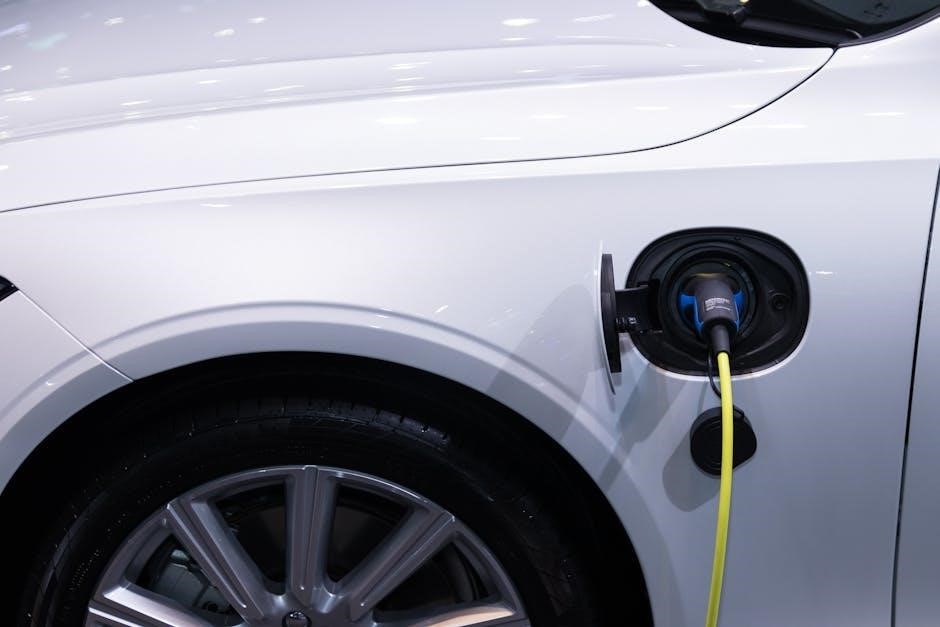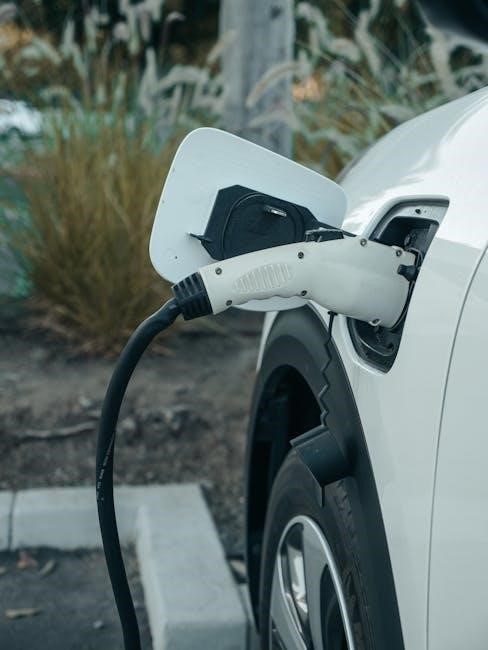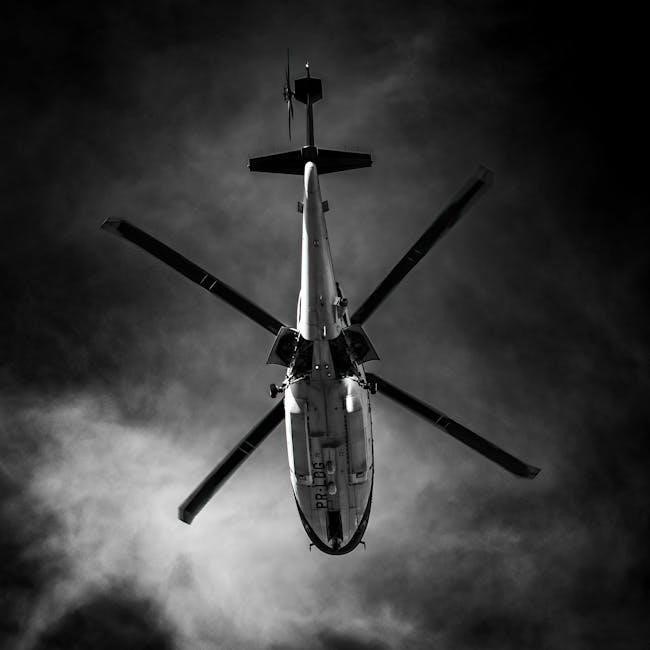Tyson Vape Charging Instructions: A Comprehensive Guide
Welcome to the ultimate resource for powering your Tyson Vape! This guide details everything from understanding the USB-C port to maximizing battery life,
ensuring a consistently satisfying vaping experience. We’ll cover troubleshooting, safety, and official accessories, all based on recent user feedback and product details.
Today is 11/28/2025 22:22:55 ()
Tyson 2.0 vapes have quickly become popular, known for their quality and innovative features. A key aspect of the user experience is efficient charging, utilizing a USB Type-C port for quick and easy power-ups.
Understanding the charging process is crucial for optimal performance and longevity. Many users report success charging via alternative sources like PS5 consoles or laptops to avoid potential overcharging issues when using standard wall adapters.
This guide will navigate you through the nuances of keeping your Tyson Vape powered, addressing common concerns and offering best practices for battery health.
Understanding the USB-C Charging Port
Tyson Vapes utilize a USB Type-C port, a modern standard offering faster charging speeds and increased durability compared to older USB types. This port is conveniently located for easy access, allowing for quick connections with compatible cables.
The USB-C connection ensures a stable power supply, vital for maintaining battery health. However, it’s important to note that not all chargers are created equal; some may deliver inconsistent power.
Regularly inspecting the port for debris or damage is recommended to ensure optimal connectivity and prevent charging issues.
What Comes in the Box: Included Charging Accessories
Each Tyson Vape package includes a USB-C cable, designed specifically for compatibility with your device. This cable facilitates convenient charging from wall adapters, laptops, or even power banks.
While a wall adapter isn’t always included, the provided USB-C cable is a crucial component for powering up your vape. It’s recommended to use a standard 5V/1A or 5V/2A adapter for optimal charging.
Keep the cable in a safe place, as it’s your primary means of recharging and maintaining your Tyson Vape’s functionality.
Charging Methods for Tyson Vapes
Explore various ways to recharge your Tyson Vape! We’ll detail using the included USB-C cable, wall adapters, and alternative sources like laptops and PS5 consoles.
Using the Included USB-C Cable
The simplest method is utilizing the USB-C cable provided with your Tyson Vape. This ensures compatibility and optimal charging speeds. Connect one end to your vape’s USB-C port and the other to a suitable power source – a wall adapter or a USB port on a laptop or gaming console.
Ensure a secure connection for efficient power transfer. A USB-C connection offers quick and easy recharging, a significant advantage for Tyson 2.0 Heavyweight users. Remember, a faulty cable can hinder charging, so inspect it regularly for damage.
This method is convenient for both home and on-the-go charging.
Charging via Wall Adapter
For faster charging, use a USB wall adapter. Ensure the adapter is rated for 5V/1A or 5V/2A to safely and efficiently charge your Tyson Vape. Connect the included USB-C cable to the adapter, then plug it into a standard wall outlet.
However, be cautious! Some users report potential overcharging issues when using wall adapters, potentially damaging the battery. Consider alternative sources like a PS5 or laptop to mitigate this risk, as suggested by community feedback.
Monitor the vape during charging and avoid prolonged unattended charging.
Alternative Charging Sources: Laptops & PS5
Laptops and the PlayStation 5 offer safer charging alternatives to standard wall adapters for your Tyson Vape. These sources often provide a more regulated power output, reducing the risk of overcharging and potential battery damage, a concern voiced by many users.
Simply connect your USB-C cable to a USB-C port on your laptop or PS5. Charging speeds may be slightly slower, but the added safety is a worthwhile trade-off. This method is highly recommended by the Tyson Vape community.
Remember to monitor the device while charging.

Troubleshooting Charging Issues
Encountering charging problems? This section addresses common issues like faulty cables, port damage, and potential battery failures, offering solutions for a revitalized vaping experience.
Today is 11/28/2025 22:22:55 ()
Identifying a Faulty Charging Cable
A damaged or worn-out USB-C cable is a frequent culprit behind Tyson Vape charging failures. Visually inspect the cable for any physical damage, such as fraying, bends, or exposed wires.
Try using a different USB-C cable known to be working with other devices to rule out a cable issue. If the vape charges successfully with a new cable, the original is faulty and needs replacing.
Connectivity issues stemming from cable degradation can prevent proper power transfer, so a reliable cable is crucial. Remember, consistent charging problems often point to a cable malfunction;
Today is 11/28/2025 22:22:55 ()
Checking the USB-C Port for Damage
Carefully examine the USB-C port on your Tyson Vape for any visible signs of damage. Look for bent pins, debris accumulation, or a loose connection. Use a flashlight for better visibility.
Gently try wiggling the cable when plugged in; excessive movement suggests a compromised port. Avoid forcing the cable, as this could worsen the damage. A damaged port may not establish a reliable connection for charging.
If damage is detected, discontinue use and consider contacting Tyson Vape support for assistance.
Today is 11/28/2025 22:22:55 ()
Addressing Potential Battery Problems
If your Tyson Vape isn’t charging, a failing battery could be the culprit. User reports indicate potential battery damage from frequent outlet charging, suggesting PS5 or laptop charging as safer alternatives.
If the vape heats up excessively or exhibits spontaneous activation, immediately discontinue use. A damaged battery poses a safety risk.
Contact Tyson Vape support to discuss warranty options or safe battery disposal. Never attempt to repair a damaged battery yourself.
Today is 11/28/2025 22:22:55 ()

Overcharging & Battery Health
Protect your Tyson Vape’s longevity! Overcharging can degrade the battery, as reported by users. Implementing best practices prevents damage and maintains optimal performance for extended use.
Today is 11/28/2025 22:22:55 ()
Risks of Overcharging Tyson Vapes
Overcharging poses significant threats to your Tyson Vape’s battery and overall safety. User reports detail instances of vapes overheating and even spontaneously combusting after prolonged charging, particularly when using standard wall adapters. This occurs due to the battery reaching critical temperatures and experiencing internal damage.
Continued overcharging leads to reduced battery capacity, meaning shorter vaping sessions and faster discharge rates. Ultimately, it can render the battery unusable, requiring replacement. Ignoring these risks compromises device functionality and introduces potential hazards, so mindful charging is crucial.
Today is 11/28/2025 22:22:55 ()
Preventing Overcharging: Best Practices
To safeguard your Tyson Vape, adopt proactive charging habits. Many users recommend utilizing alternative charging sources like laptops or PS5 USB ports, as they often regulate power delivery more effectively than wall adapters. Always disconnect the vape immediately upon reaching a full charge.
Consider investing in the official Tyson 2.0 Vape Charger, which features built-in overcharge protection and doubles as a portable power bank. Regularly monitor the device during charging and avoid leaving it unattended for extended periods. Prioritize safety and battery longevity!
Today is 11/28/2025 22:22:55 ()
Impact of Overcharging on Battery Lifespan
Overcharging significantly diminishes your Tyson Vape’s battery health. Consistent overexposure to electricity generates heat, accelerating battery degradation and reducing its overall capacity. Users have reported instances of vapes spontaneously activating or even experiencing battery damage after frequent overcharging through wall outlets.
This leads to shorter vaping sessions and necessitates more frequent replacements. Protect your investment by adhering to best practices and avoiding prolonged charging. A healthy battery ensures a consistent and enjoyable vaping experience for a longer duration.
Today is 11/28/2025 22:22:55 ()

The Tyson 2.0 Vape Charger (Official Accessory)
Elevate your charging experience! The official Tyson 2.0 Vape Charger, utilizing USB Type-C, offers a convenient solution and doubles as a portable micro power bank.
Today is 11/28/2025 22:22:55 ()
Features of the Official Tyson Vape Charger
The Tyson 2.0 Vape Charger is designed for optimal performance and convenience. Beyond standard charging via USB Type-C, this accessory uniquely functions as a micro power bank, providing supplemental power when outlets aren’t accessible. This dual functionality is ideal for travel or extended use away from traditional charging sources.
It ensures a consistent charge, potentially mitigating risks associated with overcharging through alternative methods like laptops or PS5s, as reported by some users. The charger’s compact design makes it easily portable, fitting seamlessly into a pocket or bag. It’s a dedicated solution built specifically for Tyson Vapes.
Today is 11/28/2025 22:22:55 ()
Using the Charger as a Micro Power Bank
The official Tyson 2.0 Vape Charger’s power bank feature offers on-the-go convenience. Fully charged, the charger provides supplemental power to your Tyson Vape, extending its usability when traditional outlets are unavailable. This is particularly useful during travel or events where access to power is limited.
Simply connect your vape to the charger via USB-C to initiate power transfer. The charger’s capacity is designed to provide a significant boost, ensuring you can continue enjoying your Tyson Vape throughout the day. It’s a practical solution for vapers who prioritize portability and uninterrupted use.
Today is 11/28/2025 22:22:55 ()

Safety Precautions During Charging
Prioritize safety while charging your Tyson Vape! Avoid extreme temperatures, never leave it unattended, and properly dispose of damaged batteries to prevent hazards.
Today is 11/28/2025 22:22:55 ()
Avoiding Extreme Temperatures
Protect your Tyson Vape’s battery by avoiding charging in excessively hot or cold environments. Extreme temperatures can significantly degrade battery performance and potentially create safety risks.
Never charge the device in direct sunlight, near heat sources like radiators, or in freezing conditions.
Ideal charging temperatures range from 20°F to 77°F (-7°C to 25°C).
Exposure to high heat can cause the battery to swell or leak, while cold temperatures can temporarily reduce capacity. Always ensure the device is at a moderate temperature before initiating the charging process for optimal safety and longevity.
Today is 11/28/2025 22:22:55 ()
Never Leaving a Vape Unattended While Charging
For safety reasons, always remain present while your Tyson Vape is charging. Recent user reports highlight instances of devices overheating or spontaneously activating during the charging cycle.
Leaving a charging vape unattended increases the risk of potential fire hazards or damage to the device and surrounding property.
Constant monitoring allows for immediate intervention if any unusual behavior is observed, such as excessive heat, swelling, or strange odors. Prioritize safety by staying nearby and regularly checking the device’s status throughout the entire charging process.
Today is 11/28/2025 22:22:55 ()
Disposing of Damaged Batteries
If your Tyson Vape battery shows signs of damage – swelling, leaking, or overheating – immediate and proper disposal is crucial. Do not attempt to continue using a damaged battery, as it poses a significant safety risk.
Contact your local waste management authority for guidelines on electronic waste (e-waste) disposal. Many communities offer designated drop-off locations for batteries. Never discard batteries in regular trash; this can lead to environmental hazards and potential fires. Prioritize responsible disposal practices.
Today is 11/28/2025 22:22:55 ()

Signs Your Tyson Vape is Fully Charged
Look for indicator lights or charging signals! Once fully charged, the light may change color or turn off, signaling readiness for vaping enjoyment.
Today is 11/28/2025 22:22:55 ()
Indicator Lights & Charging Signals
Understanding your Tyson Vape’s indicator lights is crucial. While specific models may vary, most Tyson Vapes utilize an LED light near the USB-C charging port.
Typically, a flashing light indicates the device is actively charging, providing visual confirmation of power intake.
Once the vape reaches full charge, the light often changes – it might turn to a solid color, or even turn off completely.
Pay attention to these signals, as they prevent overcharging and ensure optimal battery health. Some users have reported spontaneous firing after charging,
so observing these indicators is vital for safe operation.
Today is 11/28/2025 22:22:55 ()
Testing Battery Life After Charging
After a full charge, assess your Tyson Vape’s battery performance. Begin by using the device as you normally would, noting how long it maintains consistent vapor production.
Compare this to previous usage to identify any significant drops in battery life, which could indicate a potential issue.
Remember, Tyson 2.0 vapes boast impressive puff counts, but individual results vary.
If you experience unusually short battery life, or notice spontaneous activation as reported by some users, discontinue use and consult Tyson Vape support immediately for assistance.
Today is 11/28/2025 22:22:55 ()

Extended Battery Care & Maintenance
Prolong your Tyson Vape’s lifespan with proper care! Store it correctly when not in use and regularly clean the USB-C port to ensure optimal charging performance.
Today is 11/28/2025 22:22:55 ()
Proper Storage When Not in Use
Maximizing battery health requires mindful storage practices. When not actively vaping, store your Tyson Vape in a cool, dry environment, away from direct sunlight and extreme temperatures.
Avoid leaving it in a car during hot or cold weather, as this can degrade the battery over time.
It’s also advisable to store the device at around 40-60% charge for extended periods of inactivity. Completely discharging the battery before storage can lead to irreversible damage.
Keeping it partially charged helps maintain optimal battery function and ensures it’s ready to use when you are.
Today is 11/28/2025 22:22:55 ()
Cleaning the USB-C Port
A clean USB-C port is crucial for a reliable connection. Over time, lint, dust, and debris can accumulate, hindering charging efficiency. To clean, gently use a non-metallic tool, like a wooden toothpick or a plastic spudger, to dislodge any visible particles.
Never use metal objects, as they can cause short circuits or damage the port’s internal components. Compressed air can also be used to blow out debris. Ensure the port is completely dry before attempting to charge your Tyson Vape. Regular cleaning ensures optimal charging performance.
Today is 11/28/2025 22:22:55 ()

Common User Reports: Vape Firing When Not in Use
Users report spontaneous activation, sometimes after charging, with vapes getting hot and firing unexpectedly. Charging via PS5 or laptops may mitigate this risk;
Today is 11/28/2025 22:22:55 ()
Potential Causes of Spontaneous Activation
Several factors may contribute to a Tyson Vape firing on its own. Overcharging, as reported by users, appears to be a significant culprit, potentially damaging the internal battery and causing erratic behavior.
Internal shorts within the device, possibly stemming from manufacturing defects or physical damage, could also trigger unintended activation. Furthermore, residual power or electrical fluctuations during charging, especially when using wall adapters, might play a role.
It’s crucial to note that consistent charging through alternative sources like laptops or PS5s, as suggested by some users, aims to regulate power input and potentially prevent overcharging-related issues.
Today is 11/28/2025 22:22:55 ()
Preventative Measures to Avoid This Issue
To minimize the risk of spontaneous activation, prioritize safe charging practices. Avoid prolonged charging, especially with wall adapters, and consider utilizing alternative power sources like laptops or gaming consoles for regulated input.
Regularly inspect your vape for any signs of physical damage, and discontinue use if any are detected. Never leave your Tyson Vape unattended while charging, and always store it in a safe, temperature-controlled environment.
Employing these precautions can significantly reduce the likelihood of unexpected firing and ensure a safer vaping experience.
Today is 11/28/2025 22:22:55 ()

Warranty Information & Support
Tyson Vape offers warranty coverage for charging-related issues. Contact their support team directly for assistance, and explore options for cable or charger replacements if needed.
Today is 11/28/2025 22:22:55 ()
Contacting Tyson Vape Support
Need help with your Tyson Vape’s charging? Reaching out to Tyson Vape Support is straightforward. Begin by visiting VapeTyson.com, the official store, and navigating to their “Contact Us” section. Here, you’ll typically find a contact form for submitting inquiries directly.
Alternatively, explore their social media channels – often, they respond to messages on platforms like Instagram. When contacting support, clearly describe your charging issue, including the vape model, charging method used (wall adapter, PS5, laptop), and any error messages or unusual behavior observed. Providing detailed information will expedite the resolution process and ensure you receive the most effective assistance.
Today is 11/28/2025 22:22:55 ()
Warranty Coverage for Charging Issues
Tyson Vape’s warranty typically covers manufacturing defects that impact charging functionality. This includes issues with the integrated USB-C port or internal battery malfunctions preventing proper charging. However, the warranty generally doesn’t cover damage resulting from improper charging practices – like using non-approved adapters or overcharging.
To initiate a warranty claim for a charging issue, retain your proof of purchase and contact Tyson Vape Support (see previous section). Be prepared to provide details about the problem and potentially photos or videos demonstrating the defect. Review the full warranty terms on VapeTyson.com for specifics.
Today is 11/28/2025 22:22:55 ()

Where to Purchase Replacement Cables & Chargers
Find official replacement USB-C cables and the Tyson 2.0 Vape Charger directly at VapeTyson.com. Alternatively, standard USB-C cables are widely available from third-party retailers.
Today is 11/28/2025 22:22:55 ()
Official Tyson Vape Store
For genuine Tyson Vape charging solutions, the official VapeTyson.com store is your primary destination. Here, you’ll find the official Tyson 2.0 Vape Charger, designed specifically for optimal performance and featuring a micro power bank capability for on-the-go charging.
They also stock replacement USB-C cables, ensuring compatibility and reliable power transfer. Purchasing directly from the source guarantees authenticity and access to the latest products. Benefit from potential exclusive offers and direct support when ordering from VapeTyson.com, safeguarding your vaping experience.
Today is 11/28/2025 22:22:55 ()
Third-Party Retailers
While the official Tyson Vape store is recommended, numerous third-party retailers also carry Tyson Vape products and charging accessories. These include popular online vape shops and potentially some brick-and-mortar stores specializing in vaping equipment.
However, exercise caution when purchasing from these sources to ensure authenticity and quality. Verify the retailer’s reputation and check for genuine product listings. Be mindful of potential price variations and shipping costs when comparing options. Always prioritize reputable sellers for reliable charging cables and accessories.
Today is 11/28/2025 22:22:55 ()






























